ULTIMATE Tile Floor Cleaning Guide
Ceramic, porcelain, and stone tile flooring last longer than any other flooring material, and they can keep looking like new when cared for properly.
Floors made with resilient tile flooring can also stand up to years of use and still look great when cleaned with the right cleaning products.
Tile floor care doesn’t have to be hard, and it works best when you build it into a regular cleaning schedule and keep up with it. Neglecting tile floor cleaning is a sure way to wind up with a dull, streaked or scratched tile floor that no longer has the visual appeal it had when it was new.
Basics of Tile Floor Cleaning
Regularly sweeping up loose debris from the surface.
Washing the tile with the right kind of mop and cleaner every one to two weeks, depending on the location.
Drying the floor after you mop.
Additionally, on some types of tile, applying a coat of wax or sealant over the newly cleaned floor a few times a year is the best way of keeping a shine and protecting the tiles from stains. A few flooring types also benefit from buffing or waxing.
Tile floors come in a wide variety of materials. Floor tiles for bathrooms, kitchens, laundry rooms, and entryways are made from fired ceramic clay, porcelain, natural stone like granite, slate, and marble as well as linoleum, cork, rubber, and vinyl.
Choose a cleaning product made for the specific type of tile flooring material you have, or you may damage the surface of the flooring by using the wrong cleaner.
Tile Floor Cleaning Tools
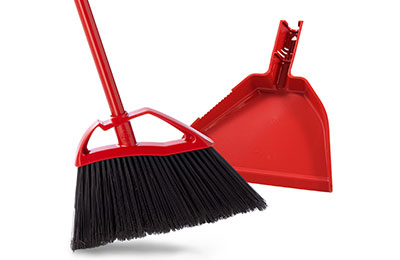
Soft Broom or Vacuum
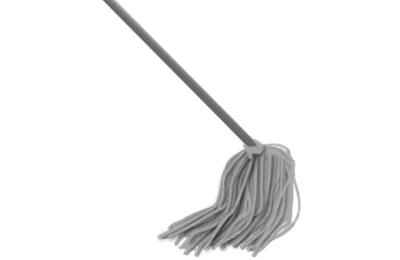
Mop
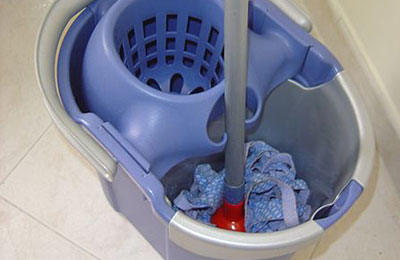
Wringer-type Mop Bucket

Soft Rags
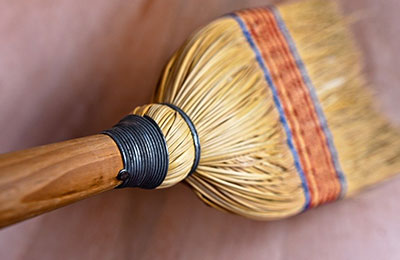
Whisk Broom
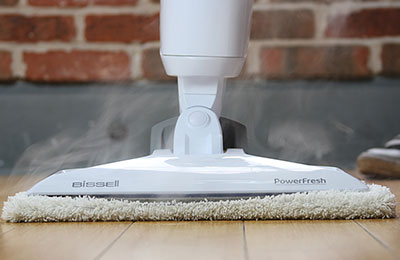
Steam Mops
Unglazed vs Glazed Tile Cleaning
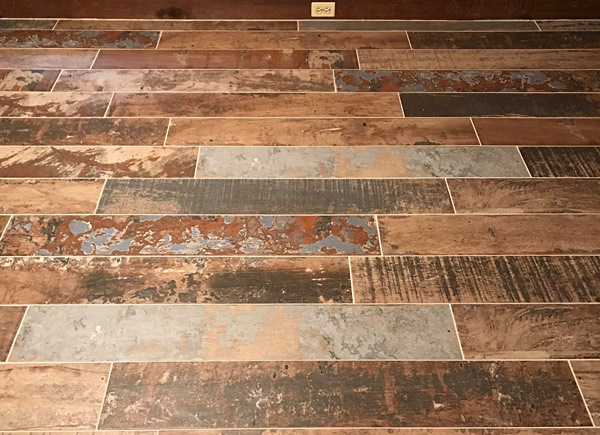
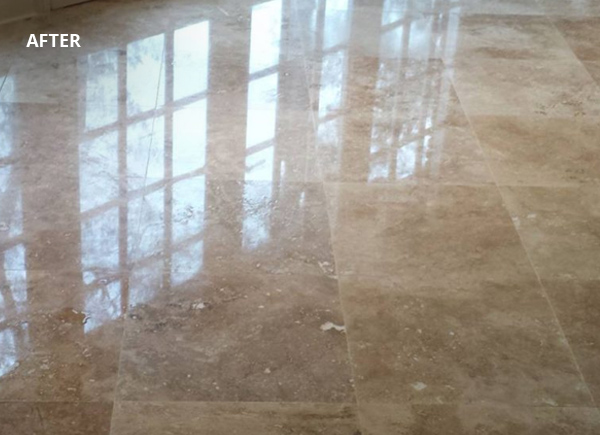
An important consideration in choosing a cleaning product for a tile floor is whether the tile is glazed or un-glazed or whether the tiles have a finish coat such as a polyurethane coating often used on cork floor tiles.
Glazed clay tiles are usually easy to recognize because they have a characteristic glossy surface which is a form of glass created on the tile surface when it is fired in a kiln. Porcelain tiles are glazed and are made with a finer texture of clay, which is more impervious to staining than ceramic clay tiles.
Glazed tiles have a harder surface and are naturally shiny, but it is essential to use cleaning products and tools that do not scratch or mar the glazing, causing the tiles to lose their sheen.
Un-glazed tiles have a less shiny surface, and this makes them more slip-resistant. Because un-glazed tiles are more porous, they need to be washed more frequently than glazed tiles to keep them looking their best. Check the labels on cleaning products to see if they can be used on glazed, un-glazed, or polyurethane coated tile.
Before you wash...
Sweeping and Vacuuming Tile Floors
The first step in cleaning tile floors is picking up all loose debris on the floor. Do this at least weekly, but any time you see a build-up of dirt, sand, or other loose material, use a broom or vacuum to clean it up to avoid damage to the tile surface.
Some debris, such as dirt and sand, have sharp edges which can scratch the glaze finish on the tile as people walk on it. Picking up this type of debris whenever you notice it prevents damage or dulling of the surface of the tile and helps keep it shiny.
A vacuum cleaner with a soft bristle cleaning head is an easy way of keeping loose dirt off the surface of a tile floor to prevent scratching and dulling of the finish. Use a narrow nozzle attachment on a hose to get in beside appliances, around table legs, and under counter ledges.
If you use a broom, choose one with soft bristles or a microfiber pad to avoid dulling the finish on the tile.


Using the Right Tile Floor Cleaner
Ceramic and porcelain tiles are the easiest to keep clean and the most rugged when it comes to cleaners. Their surfaces are dense and non-porous, making it harder for dirt, grime, stains, or cleaning chemicals to penetrate and discolor the tile. On these floors, you can use a mild detergent cleaner or a mixture of white vinegar or lemon juice and warm water.
If you find stains on ceramic or porcelain tiles, look for a tile stain remover specially formulated for the type of stain you are removing.
Ceramic and porcelain tiles are tough enough to stand up to acidic cleaning agents but don’t use acid cleaners on stone tiles like slate, granite, or marble. Avoid using vinegar, lemon juice, or any other cleaning agent with a low pH level on natural stone floors.
Instead, clean stone tile floors with mild detergent with a neutral pH level, a steam cleaner, or a cleaning product designed for the specific type of stone you have installed.
Steam mops are electrical or cordless cleaning tools which use hot steam to clean and sanitize floor surfaces. You can use a steam mop on ceramic, porcelain, and stone tile floors, but do not use a steam mop for resilient flooring coverings like linoleum, vinyl, and cork.
How do I avoid soap residue on tile floors?
Dry tile floors with clean, soft rags to avoid residues after cleaning
If you use detergent or another soap cleaner on tile flooring, you may end up with a dull and hazy finish unless you rinse the floor afterward with plain, warm water or use a steam mop.
When mopping by hand, whether you use plain water or a cleaning product, refresh the mop water several times while you go over the floor, so you aren’t just sloshing around dirty water.
Depending on how dirty the floor is, you may not need to use soap every time you mop. Mopping with plain warm water, or water with a splash of vinegar on ceramic and porcelain floors is all that might be needed on some cleaning days.
Once you have mopped the floor, whether you have used a detergent, another cleaner, or plain water, dry the floor with clean, soft rags to avoid a residue and keep it shiny. Old kitchen and bath towels, cut into approximately 2 foot (.6 meter) squares, work well for drying a tile floor.
Avoid hurting your back and knees by drying the floor using your foot to push the rag around, or use a dry sponge mop to move the cloth over the floor.